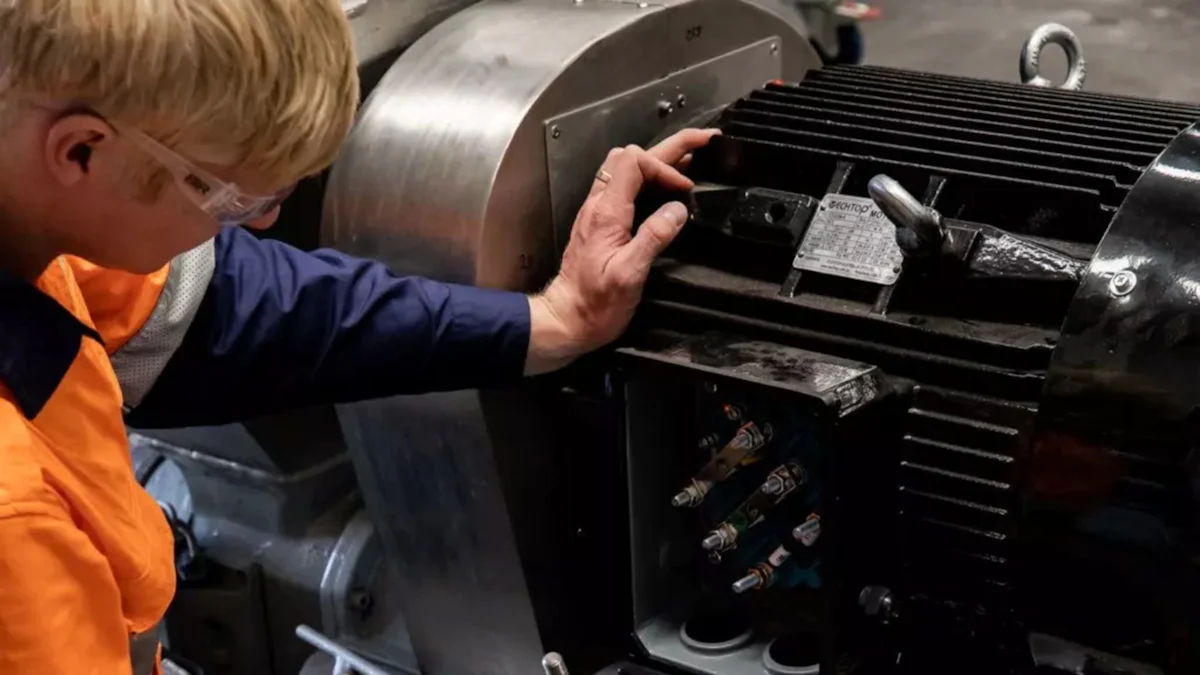
The excavator engine serves as the powerhouse of the machine, driving its hydraulic and mechanical systems with precision. It transforms fuel into energy, enabling the excavator to lift, dig, and move materials efficiently. Modern excavator engines are designed to meet strict emission standards, ensuring cleaner and more fuel-efficient operations. Understanding the components of this engine helps you maintain its performance and avoid costly breakdowns. As Gregory Poole, a heavy equipment expert, emphasizes, prioritizing engine care ensures durability and prevents failures that could disrupt your projects.
Key Takeaways
-
Understanding the components of an excavator engine is crucial for maintaining performance and preventing costly breakdowns.
-
Regular maintenance of the fuel system, including checking filters and injectors, ensures efficient fuel delivery and optimal engine performance.
-
The cooling system is essential for preventing overheating; regular inspections and coolant checks can extend engine lifespan.
-
A well-functioning lubrication system reduces friction and protects engine components, making regular oil changes vital for longevity.
-
The exhaust system not only removes waste gases but also helps meet environmental standards; maintaining it can enhance performance and reduce emissions.
-
All engine components must work in harmony; regular maintenance ensures they function together effectively for optimal excavator performance.
-
Consulting the excavator’s manual for maintenance guidelines is key to ensuring long-term reliability and efficiency.
Cylinders and Pistons in an Excavator Engine

Function of Cylinders and Pistons
Cylinders and pistons form the core of the excavator engine’s operation. The cylinder acts as a chamber where the piston moves up and down. This movement is crucial for converting the energy from fuel combustion into mechanical power. The piston, a disc-shaped component, resides within the cylinder and plays a pivotal role in this process. It compresses the air-fuel mixture, creating the conditions necessary for combustion. Without this compression, the engine would fail to generate the power needed to operate the excavator.
The piston rod, which connects the piston to the crankshaft, ensures that the force generated inside the cylinder is transferred effectively. This rod must be exceptionally strong to withstand the immense pressure and heat produced during operation. Its smooth surface prevents damage to internal seals, ensuring the system remains efficient and durable.
Role in the Combustion Process
The combustion process begins when the piston compresses the air-fuel mixture inside the cylinder. This compression increases the mixture’s temperature and pressure, preparing it for ignition. Once ignited, the expanding gases push the piston downward with tremendous force. This motion is known as the “power stroke.” The piston then moves back upward to expel exhaust gases, completing the cycle.
Each piston in the excavator engine works in harmony with others, ensuring continuous power generation. The rapid reciprocating motion of the pistons drives the crankshaft, which converts this linear motion into rotational energy. This energy powers the hydraulic and mechanical systems of the excavator, enabling it to perform tasks like digging and lifting.
Generating Mechanical Energy for the Excavator
The pistons and cylinders are integral to generating the mechanical energy that powers the excavator. As the pistons move up and down, they rotate the crankshaft. This rotation transforms the energy from combustion into mechanical energy. The crankshaft then transmits this energy to other components of the excavator engine, such as the hydraulic pump and final drive unit.
The hydraulic pump uses this mechanical energy to create hydraulic pressure, which powers the excavator’s arm, boom, and bucket. Simultaneously, the final drive unit ensures the tracks move efficiently, allowing the excavator to navigate various terrains. Without the seamless operation of the pistons and cylinders, the excavator engine would fail to deliver the power required for these critical functions.
“Think of the piston as the engine within the cylinder,” as experts often describe. It is the force translator, converting the energy from combustion into real-world tasks. This highlights the importance of maintaining these components to ensure the excavator engine operates at peak efficiency.
Fuel System of an Excavator Engine
Key Components of the Fuel System
The fuel system in an excavator engine consists of several critical components that work together to deliver fuel efficiently. The fuel tank stores diesel, which powers the engine. Its size determines how long the excavator can operate before refueling. A larger tank allows extended operation, reducing downtime on job sites. The fuel pump draws diesel from the tank and sends it to the engine under pressure. This ensures a steady supply of fuel for combustion.
The fuel injectors play a vital role in atomizing the diesel into fine droplets. This process ensures the fuel mixes evenly with air for efficient combustion. The fuel filter removes impurities and debris from the diesel, preventing damage to the engine. Clean fuel is essential for maintaining the performance and longevity of the excavator engine. Together, these components form a system that ensures the engine receives the right amount of clean fuel at the right time.
How the Fuel System Powers the Engine
The fuel system powers the excavator engine by delivering diesel to the combustion chamber. The process begins with the fuel pump drawing diesel from the tank. The pump sends the fuel through the filter, where contaminants are removed. Clean fuel then reaches the injectors, which spray it into the engine’s cylinders.
Inside the cylinders, the fuel mixes with compressed air. The high pressure and temperature ignite the mixture, creating an explosion. This combustion generates the energy needed to move the pistons. The pistons, in turn, drive the crankshaft, which powers the hydraulic and mechanical systems of the excavator. Without a properly functioning fuel system, the engine cannot produce the energy required for tasks like digging and lifting.
“Fuel injectors must deliver a precise amount of fuel for optimal engine performance,” as experts emphasize. Regular inspection of the fuel system ensures consistent power output and prevents costly repairs.
Ensuring Efficient Fuel Delivery and Usage
Efficient fuel delivery is crucial for maintaining the performance of your excavator engine. To achieve this, you should regularly inspect and maintain the fuel system. Start by checking the fuel filter for clogs or damage. Replace it as needed to ensure clean fuel reaches the engine. Inspect the fuel injectors for blockages that could disrupt the spray pattern. Clean or replace them if necessary.
Bleeding the fuel lines is another essential step. Air trapped in the lines can hinder fuel flow, making it difficult for the engine to start. Loosen the injector lines and crank the engine until fuel flows out. Tighten the lines afterward to restore proper operation. Proper fuel management, including using high-quality diesel, also helps prevent issues like injector clogging and engine wear.
Efficient fuel usage not only enhances engine performance but also reduces operational costs. By maintaining the fuel system, you ensure that your excavator operates smoothly and efficiently, minimizing downtime and maximizing productivity.
Cooling System in an Excavator Engine

Importance of the Cooling System
The cooling system in an excavator engine is vital for maintaining its performance and preventing damage. Engines generate immense heat during operation, and without proper cooling, this heat can lead to overheating. Overheating not only reduces efficiency but also risks severe engine damage, which can result in costly repairs or downtime. By regulating the engine’s temperature, the cooling system ensures that the excavator operates smoothly under demanding conditions.
A well-functioning cooling system also extends the lifespan of your excavator engine. Excessive heat can degrade engine components over time, leading to wear and tear. Keeping the engine at an optimal temperature minimizes this risk, ensuring durability and consistent performance. Regular attention to the cooling system safeguards your investment and keeps your excavator running efficiently.
“The cooling system is the unsung hero of heavy machinery,” as experts often say. It works tirelessly to protect the engine from the damaging effects of heat.
Components of the Cooling System
The cooling system consists of several key components that work together to manage the engine’s temperature:
-
Radiator: The radiator dissipates heat from the coolant, which absorbs heat from the engine. Its design allows maximum airflow to cool the liquid effectively.
-
Cooling Fan: The fan enhances airflow through the radiator, ensuring efficient heat dissipation. It plays a crucial role, especially during heavy-duty operations.
-
Water Pump: This pump circulates coolant throughout the engine and radiator. It ensures a steady flow, preventing hotspots in the engine.
-
Thermostat: The thermostat regulates the flow of coolant based on the engine’s temperature. It ensures the engine warms up quickly and maintains an optimal operating temperature.
-
Coolant: This liquid absorbs heat from the engine and transfers it to the radiator. It also prevents freezing in cold conditions and protects against corrosion.
Each component must function correctly to maintain the cooling system’s efficiency. Neglecting any part can disrupt the system and lead to overheating.
Preventing Overheating and Maintaining Optimal Temperature
Preventing overheating requires regular maintenance of the cooling system. Start by inspecting the radiator for blockages or debris. Clean it frequently to ensure proper airflow. Check the coolant level and quality. Low or contaminated coolant reduces the system’s ability to absorb and transfer heat. Replace the coolant as recommended by the manufacturer.
Inspect the cooling fan for damage or wear. A faulty fan cannot provide adequate airflow, leading to inefficient cooling. Ensure the water pump operates smoothly. Any leaks or malfunctions in the pump can disrupt coolant circulation. Test the thermostat periodically to confirm it opens and closes at the correct temperature.
“Regular maintenance of cooling components such as fans, radiators, and surrounding areas is essential to ensure proper airflow and cooling efficiency,” as highlighted in technical documents on heavy machinery.
By taking these steps, you can maintain the optimal temperature of your excavator engine. A well-maintained cooling system not only prevents overheating but also ensures the engine performs reliably, even under challenging conditions.
Lubrication System in an Excavator Engine
Role of the Lubrication System
The lubrication system plays a critical role in ensuring the smooth operation of your excavator engine. It reduces friction between moving parts, preventing wear and tear that could lead to costly repairs. By delivering clean oil to various engine components, the system minimizes heat buildup caused by friction. This helps maintain optimal engine performance, even during heavy-duty operations.
Lubrication also protects the engine from contaminants. The oil carries away dirt, debris, and metal particles, keeping the internal components clean. Without proper lubrication, these contaminants could cause damage, leading to reduced efficiency and potential engine failure. A well-maintained lubrication system ensures your excavator engine operates reliably and lasts longer.
“Think of the lubrication system as the lifeblood of your engine,” experts often say. It keeps every part moving seamlessly, ensuring the engine performs at its best.
Key Parts of the Lubrication System
The lubrication system consists of several essential components that work together to protect your excavator engine:
-
Oil Pump: The oil pump is the heart of the lubrication system. It draws oil from the sump and forces it through the engine’s oil galleries at high pressure. This ensures every moving part receives adequate lubrication.
-
Oil Filter: The oil filter removes impurities from the oil, such as dirt and metal particles. Clean oil is crucial for preventing damage to engine components.
-
Oil Galleries: These are passages within the engine that distribute oil to critical areas, including the crankshaft, camshaft, and piston bearings.
-
Sump: The sump, located at the bottom of the engine, stores the oil when it is not circulating. It also helps dissipate heat from the oil.
Each component must function correctly to ensure the lubrication system operates efficiently. Regular inspection and maintenance of these parts are essential for keeping your excavator engine in top condition.
Reducing Friction and Extending Engine Lifespan
Reducing friction is one of the primary functions of the lubrication system. When engine parts move against each other, they generate heat and wear. The lubrication system creates a thin film of oil between these parts, reducing direct contact and minimizing friction. This not only improves efficiency but also prevents overheating.
Proper lubrication extends the lifespan of your excavator engine. By reducing wear and protecting components from contaminants, the system ensures the engine remains in good condition for years. Regular oil changes and filter replacements are vital for maintaining the system’s effectiveness. Using high-quality oil recommended by the manufacturer further enhances performance and durability.
“Neglecting lubrication can lead to catastrophic engine failure,” as industry professionals warn. Regular maintenance of the lubrication system is essential for avoiding downtime and costly repairs.
By understanding and maintaining the lubrication system, you can ensure your excavator engine operates smoothly and efficiently. A well-lubricated engine not only performs better but also saves you money in the long run by reducing repair costs and extending the machine’s lifespan.
Exhaust System of an Excavator Engine
Function of the Exhaust System
The exhaust system in an excavator engine plays a crucial role in maintaining the machine’s efficiency and environmental compliance. It removes waste gases produced during the combustion process, ensuring the engine operates smoothly. These gases, if not expelled, can build up and disrupt the engine’s performance. By channeling them away, the exhaust system prevents backpressure, which could reduce power output and fuel efficiency.
Additionally, the exhaust system contributes to reducing harmful emissions. Modern excavators often include advanced after-treatment technologies to meet stringent emission standards. These systems help minimize pollutants like nitrogen oxides (NOx), carbon monoxide (CO), and particulate matter (PM), ensuring the excavator operates in an environmentally responsible manner.
“The exhaust system is not just about removing gases; it’s about optimizing performance while protecting the environment,” as industry experts emphasize.
Components of the Exhaust System
The exhaust system consists of several key components that work together to manage waste gases effectively:
-
Exhaust Manifold: This component collects gases from the engine’s cylinders and directs them into the exhaust pipe. Its design ensures efficient gas flow, reducing resistance.
-
Muffler: The muffler reduces noise generated by the exhaust gases. It contains chambers and perforated tubes that dissipate sound waves, making the excavator quieter during operation.
-
Diesel Oxidation Catalyst (DOC): The DOC converts harmful carbon monoxide and hydrocarbons into less harmful substances like carbon dioxide and water vapor.
-
Diesel Particulate Filter (DPF): The DPF traps and removes particulate matter (soot) from the exhaust gases. It prevents these particles from being released into the atmosphere.
-
Selective Catalytic Reduction (SCR): The SCR system reduces nitrogen oxide emissions by injecting a urea-based solution into the exhaust stream. This process converts NOx into harmless nitrogen and water.
Each component plays a specific role in ensuring the exhaust system functions efficiently. Together, they help maintain the excavator engine’s performance while adhering to environmental regulations.
Removing Waste Gases and Reducing Emissions
Efficient removal of waste gases is essential for the excavator engine to perform optimally. The exhaust manifold collects gases from the combustion chambers and channels them through the exhaust pipe. As the gases pass through the muffler, noise levels decrease, making the machine more suitable for various work environments.
To reduce emissions, modern excavators rely on advanced after-treatment systems. The DOC and DPF work together to eliminate carbon monoxide and particulate matter. The SCR system further reduces nitrogen oxide emissions, which are a significant contributor to air pollution. Research shows that combining these technologies can reduce emissions by up to 99.5%, making excavators more environmentally friendly.
Regular maintenance of the exhaust system ensures its components function correctly. Cleaning or replacing the DPF prevents blockages that could hinder gas flow. Inspecting the SCR system ensures proper urea injection, which is critical for reducing NOx emissions. By keeping the exhaust system in good condition, you can enhance the excavator’s performance and minimize its environmental impact.
“Emission reduction technologies in construction machinery are vital for meeting environmental standards and improving air quality,” as highlighted in environmental studies.
How Excavator Engine Components Work Together
The Combustion Process and Power Generation
The combustion process serves as the foundation of power generation in an excavator engine. Inside the engine, the pistons compress the air-fuel mixture within the cylinders. This compression creates the conditions necessary for ignition. When the mixture ignites, it produces a powerful explosion that forces the pistons downward. This motion, known as the power stroke, generates the mechanical energy required to drive the engine.
The crankshaft converts the linear motion of the pistons into rotational energy. This rotational energy becomes the driving force behind the excavator’s hydraulic and mechanical systems. Without this seamless conversion, the excavator engine would fail to deliver the power needed for essential tasks like digging, lifting, and moving materials.
“The combustion process is the heartbeat of the engine, transforming fuel into usable energy,” as industry experts often explain. Understanding this process helps you appreciate the intricate mechanics behind your excavator’s performance.
Power Transmission to Hydraulic and Mechanical Systems
Once the engine generates mechanical energy, it transmits this power to the excavator’s hydraulic and mechanical systems. The hydraulic pump plays a critical role in this process. It converts the mechanical energy from the engine into hydraulic energy by pressurizing hydraulic fluid. This pressurized fluid powers the boom, arm, and bucket, enabling precise movements and heavy lifting.
Simultaneously, the engine drives the final drive unit, which controls the excavator’s tracks. This ensures smooth movement across various terrains. The synchronization between the engine and these systems allows the excavator to perform complex tasks efficiently. For example, while the hydraulic system operates the arm and bucket, the mechanical system ensures the machine remains stable and mobile.
“The engine doesn’t just power the machine; it coordinates multiple systems to achieve seamless operation,” as highlighted in technical manuals on heavy machinery.
Synchronization of Engine Components for Optimal Performance
The components of an excavator engine work in harmony to ensure optimal performance. The pistons, crankshaft, and fuel injectors operate in a precise sequence to maintain consistent power output. The cooling system regulates the engine’s temperature, preventing overheating during demanding operations. The lubrication system reduces friction, ensuring smooth movement of internal parts.
This synchronization extends to the hydraulic and mechanical systems. The engine’s power must align with the hydraulic pump’s demands to maintain efficiency. For instance, when the boom lifts a heavy load, the engine adjusts its output to provide the necessary force. This coordination ensures the excavator performs tasks without straining its components.
Regular maintenance is essential to preserve this synchronization. Inspecting and servicing each system ensures they function correctly and complement one another. By understanding how these components work together, you can maximize the efficiency and lifespan of your excavator engine.
“Optimal performance depends on the flawless interaction of all engine components,” as experts emphasize. Regular care and attention to detail keep your machine running smoothly.
Each component of the excavator engine plays a vital role in ensuring smooth and efficient operation. From the cylinders and pistons generating power to the cooling and lubrication systems maintaining optimal conditions, every part contributes to the machine’s performance. Regular maintenance is essential to keep these components functioning effectively. By inspecting and servicing the engine routinely, you can prevent costly breakdowns and extend the lifespan of your equipment. Always consult the excavator’s manual or seek professional advice for detailed maintenance guidelines to ensure long-term reliability and efficiency.





